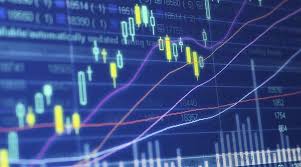Contract for Difference or CFD is a popular form of trading in the financial market. It is an agreement between two parties to exchange the difference in the price of an asset from the time the contract is opened to when it is closed. CFD trading is highly speculative and risky, but if done correctly, it can yield high returns. In this blog post, we will discuss the strategies of CFD trading that can help in maximizing profits while minimizing risks.
Selecting the right asset to trade: It is essential to choose the asset you want to trade very carefully. CFDs can be traded on various financial instruments like stocks, indices, commodities, currencies, and cryptocurrencies. You need to research and analyze the market to identify the most profitable asset and analyze its trends. It is best to trade assets that you have prior knowledge on or have been following closely.
Utilizing leverage effectively: cfd trading allows traders to use leverage in their trades, allowing them to control a larger position with a smaller margin. However, leverage can increase the risk as well. It is crucial to use leverage effectively, and not go on a binge of over trading. Always set stop-losses and take-profit levels to avoid substantial risks.
Implementing risk management tools: CFD trading involves higher risks than traditional trading. Hence risk management is crucial in CFD trading. Use risk management tools like stop loss and limit order to minimize losses.
Keeping an eye on news and economic events: Economic events like FOMC meetings, non-farm payroll reports, and interest rate decisions can have a significant impact on the financial markets. Traders need to keep an eye on these events and the news affecting the market to be able to make informed trading decisions.
Implementing technical analysis: Technical analysis is the act of forecasting future price movements based on historical price data. Trading tools like charts, graphs, and indicators can be used to analyze price patterns and forecast future price trends. Technical analysis can help traders make informed trading decisions.
Conclusion:
CFD trading is an exciting and rewarding but risky venture. To maximize profits while minimizing risks in CFD trading, selecting the right asset to trade, utilizing leverage effectively, implementing risk management tools, keeping an eye on news and economic events, and implementing technical analysis are essential strategies that every trader should utilize. By implementing these strategies, traders can trade CFDs safely and profitably.
